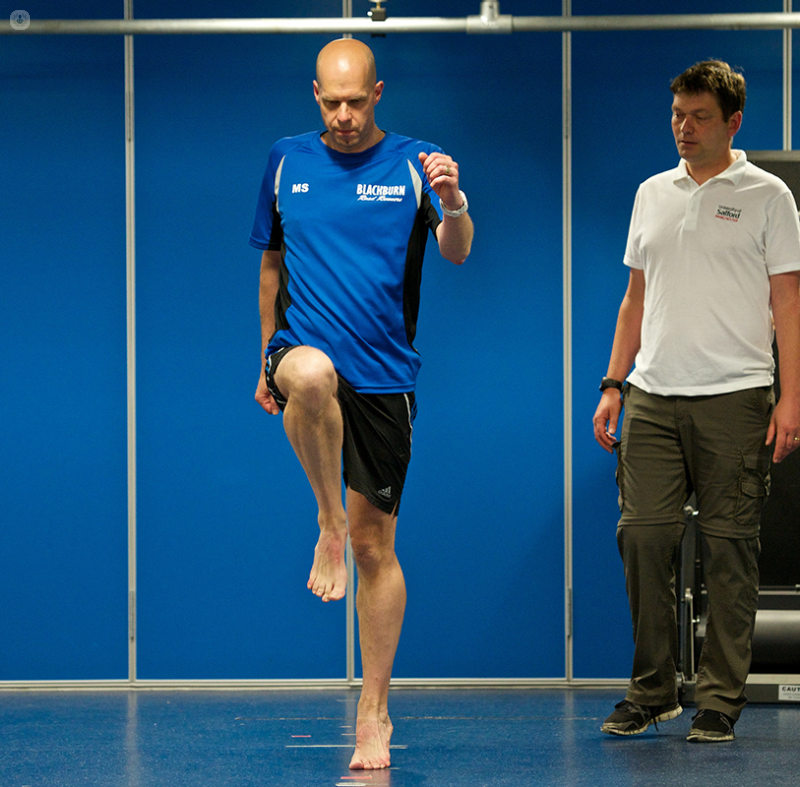Sports podiatry
What is sports podiatry?
Podiatry is a medical specialty which deals with problems in the foot. This could include foot injuries, deformities, infections, or problems caused by conditions such as diabetes.
A sports podiatrist specialises in the treatment and prevention of sports injuries. In general, you might see a sports podiatrist if you want to understand the effect playing sport is having on your feet, or you need support with improving your performance.

Who can it help?
A sports podiatrist can help people with a range of issues, not necessarily all foot-related. This is because the way we walk or run can cause injury in other parts of the body. You might benefit from seeing a sports podiatrist if you have:
- pain in your foot and toes
- ankle problems
- heel pain
- knee pain
- hip pain
- issues with your calf or Achilles tendon
- leg and shin pain
- lower back pain
Sports podiatrists see people of any age and of any ability level. They work with elite athletes as well as amateur runners.
Sports injuries can come in two forms: acute and chronic. An acute injury involves a specific episode of trauma (e.g. a fall or collision), while as chronic sports injury involves the gradual onset of pain and other symptoms over a long period of time. The majority of people who see a sports podiatrist tend to come with chronic sports injuries.
What does it involve?
Treatment generally starts with an assessment, often known as a biomechanical assessment.
This involves looking at the way you move and how you use your legs and feet, to detect where the pressure is falling and what forces are acting on your foot.
The exercises and technology involved can vary from clinic to clinic. Gait analysis in particular is a rapidly evolving area and some clinics can now create moving 3D simulations of how you run using a camera array and special software.
After the assessment, the podiatrist may provide advice on:
- appropriate or supportive footwear
- how to strengthen your joints
- how to adjust your gait
- what movements to avoid to prevent injury
The podiatrist might also provide short-term support via taping or strapping, do some exercises with your to mobilise your joints, and refer you to a suitable exercise plan.
Finally, if the podiatrist specialises in orthotics, they may provide advice on the right kind of orthosis for you to further support your foot and realign the skeleton back to its ideal position.
What ongoing care do I receive?
This varies from person to person.
If you are recovering from an injury, for example, an initial assessment might involve providing proper support in terms of footwear and orthotic insoles, and a program of training to gradually build you up to your previous capabilities.
If you have a chronic injury but it the symptoms are mild you may only need one or two appointments to get advice on adjusting your movements and exercise regime.
Alternatives to sports podiatry
If you experience acute pain, swelling, or weakness in your feet, it’s important in the first instance to see a GP or in urgent cases go to A&E.
For chronic pain caused by an inflammatory condition such as arthritis you should continue the medical treatment prescribed by your rheumatologist as well as their advice on exercise. However, the advice from a sports podiatrist can be useful in conjunction with your existing treatment since it focuses specifically on the sports context.